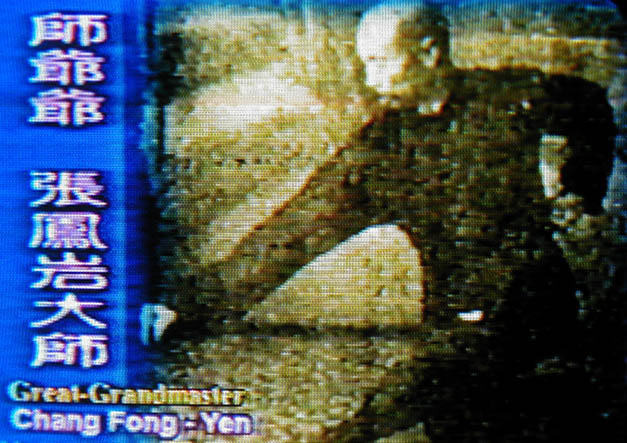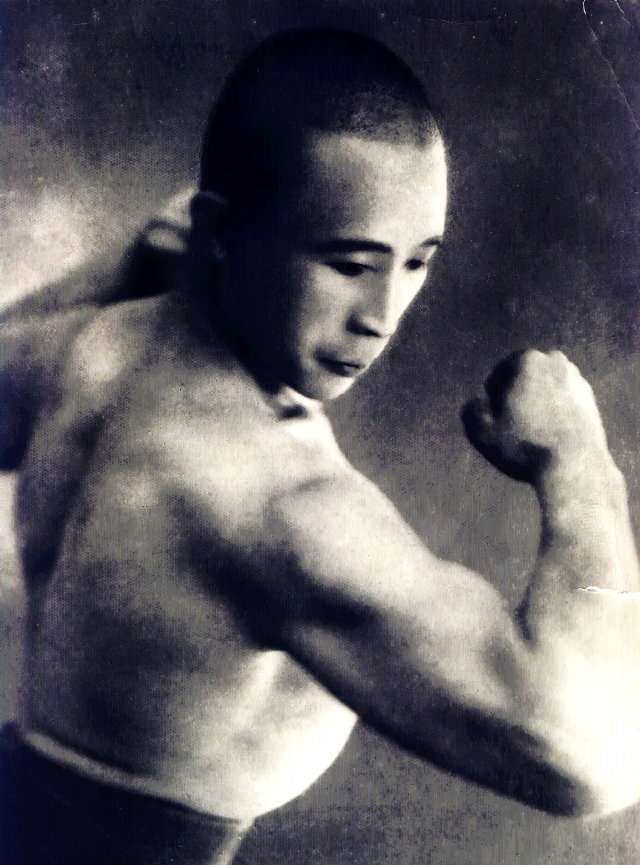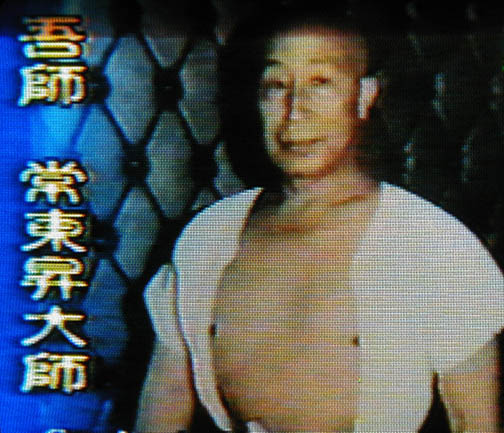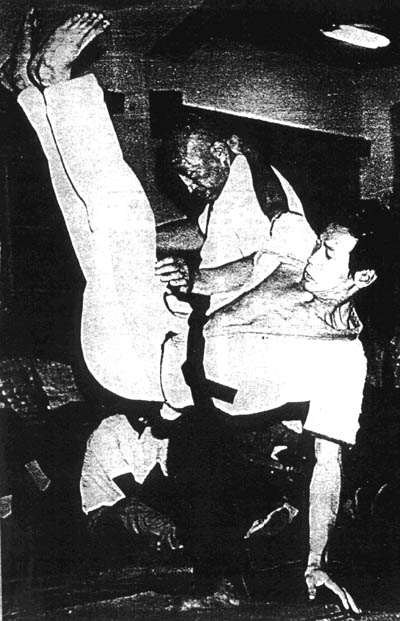
Great Grandmaster Chang Fong-Yen was the first outstanding master of Paoting Shuai-Chiao in the 20th century. By this time, Chinese Shuai-Chiao wrestling had evolved into four major local styles.

- Peking
- Paoting
- Tienjin
- Mongolian

Chang Feng-Yen’s most outstanding disciple was a young Muslim from Hopei province named Ch’ang Tung-Sheng. Grandmaster Ch’ang Tung-Sheng began his training under Chang Feng-Yen at an early age, developing skills that established a rock-solid foundation on which his fighting genius would blossom.
For example, there’s a well known story of Great Grandmaster Chang Feng-Yen sending his young charge out to catch grasshoppers to feed his bird. When Ch’ang Tung-Sheng tried to catch the grasshoppers in the field grass, they easily evaded his hands despite the speed of his movement. Frustrated and embarrassed, he returned to report his failure to Chang Feng-Yen. Chang Feng-Yen then proceeded to show Ch’ang Tung-Sheng how to use the Reaping Stance, a traditional Shuai-Chiao training posture, as a means to catch the grasshoppers. His foot sickle motion would sweep the grass, followed by the swinging, collecting motion of his arm. The initial foot sweep rustled the grasshoppers up from the grass and right into the following sweep of the arm.

Through that training exercise, Grandmaster Ch’ang developed a lightning fast leg picking technique, which could continue as a powerful throw or simple takedown, depending on the situation.
Ch’ang’s relationship with his master was so close that he eventually married Chang Feng-Yen’s daughter. Nonetheless, Grandmaster Ch’ang went on to travel around China, training and seeking out other Shuai-Chiao masters with whom he could test his skills. Although he was never beaten, it is said that Ch’ang still learned the special technique of each fighter he came across. It is thus that he learned some of the striking systems that he applied in combat later on, such as Hsing-Yi Chuan.
Grandmaster Ch’ang in Later Dates As a competitor, Ch’ang Tung-Sheng was also undefeated. He fought countless Shuai-Chiao matches, as well as Lei-Tai full contact no-holds-barred matches and challenge fights. The Lei-Tai matches were the predecessors to today’s combat-style Shuai-Chiao fights and modern Sanshou. Grandmaster Ch’ang won the All China Full Contact Tournament twice, defeating all comers from all styles. He also fought the Mongolian champion, Kuli. Their bout was filled with high-flying throws, all of which were issued by Ch’ang.
Ch’ang’s victories at the All China Full Conact Tournaments earned him entry into the prestigious Control Martial Arts Academy in Nanking. The academy, established in 1927, was the premier martial arts establishment in all of China following the fall of the Ching Dynasty in 1912. The founder, Chang Chih-Chiang, envisioned it as a place where China’s top fighting masters could pool their knowledge for the betterment and strengthening of the Republic of China.
When Ch’ang Tung-Sheng gained admission to the academy, he also became the youngest faculty member at the time, assuming the mantle of leadership for the Shuai-Chiao division. It is thanks to Grandmaster Ch’ang that other martial art systems have heard of Shuai-Chiao.

During his time as student of Nanking Central Martial Arts Academy, Ch’ang Tung-Sheng was obliged to study other Chinese martial arts, including Shaolin, Tan Tui (the Muslim Springing-leg style), Pa Kua, and Tai-Chi. The style of Tai-Chi by Ch’ang was influenced during a martial art exchange with General Li Jin-Ling, a Yang style Tai-Chi master who was a generation earlier than Yang Cheng-Fu. This style of Tai-Chi also became part of Ch’ang’s daily practice as Ch’ang style Tai-Chi Chuan. He was known to study a system and then assimilate and integrate its techniques and forms into his Shuai-Chiao. Ch’ang style Tai-Chi and Hsing Jing (Ch’ang’s “essence of Hsing-Yi”) were two results of this process, giving him the ability to kick and punch with the same confidence that he threw and locked.
